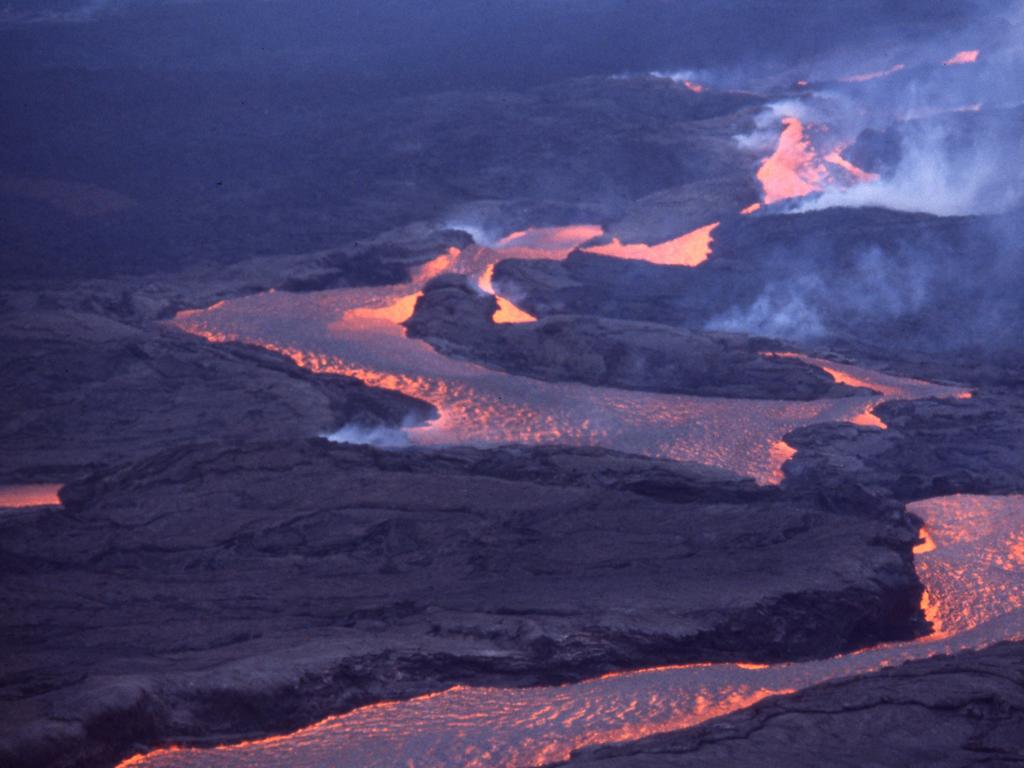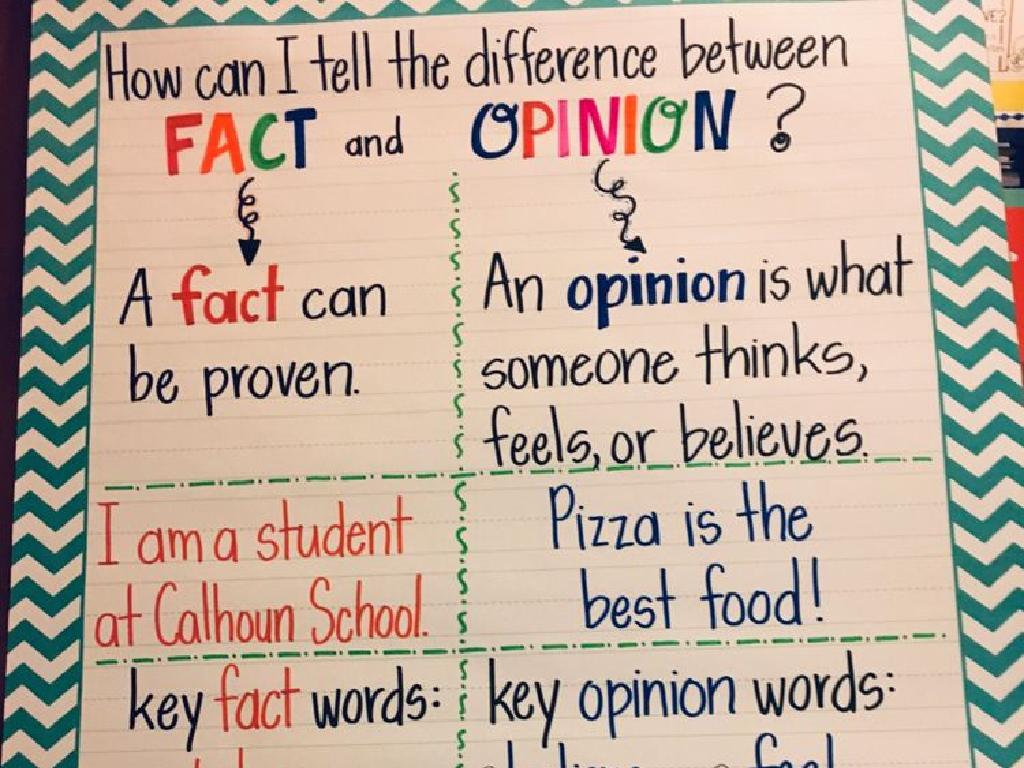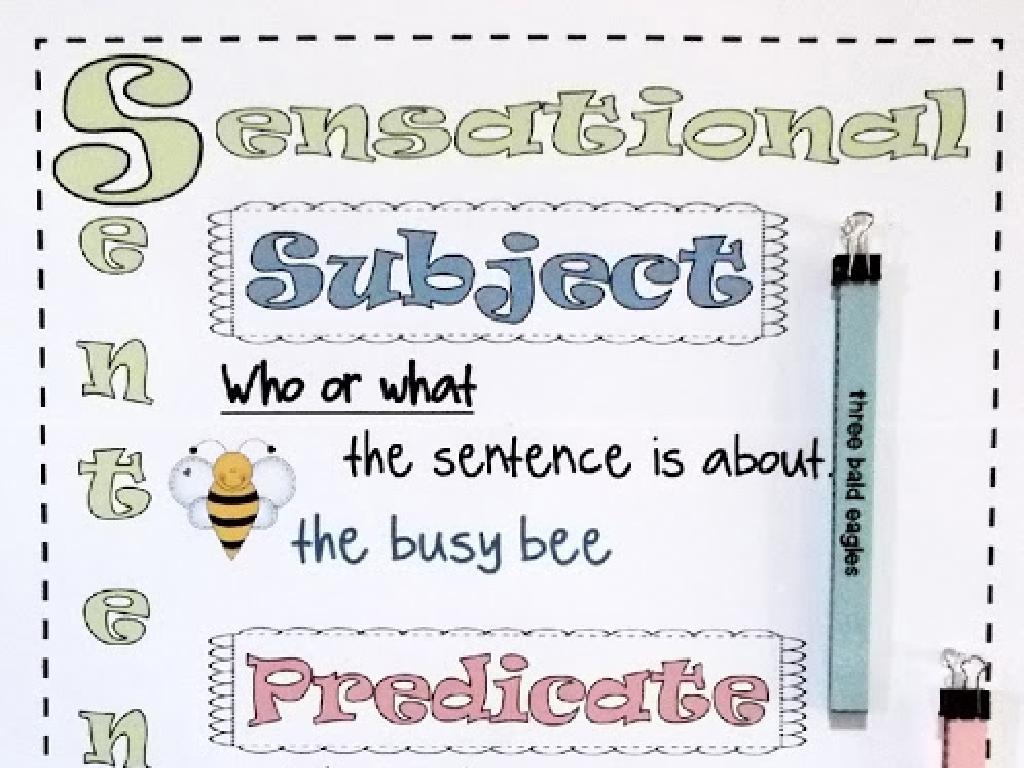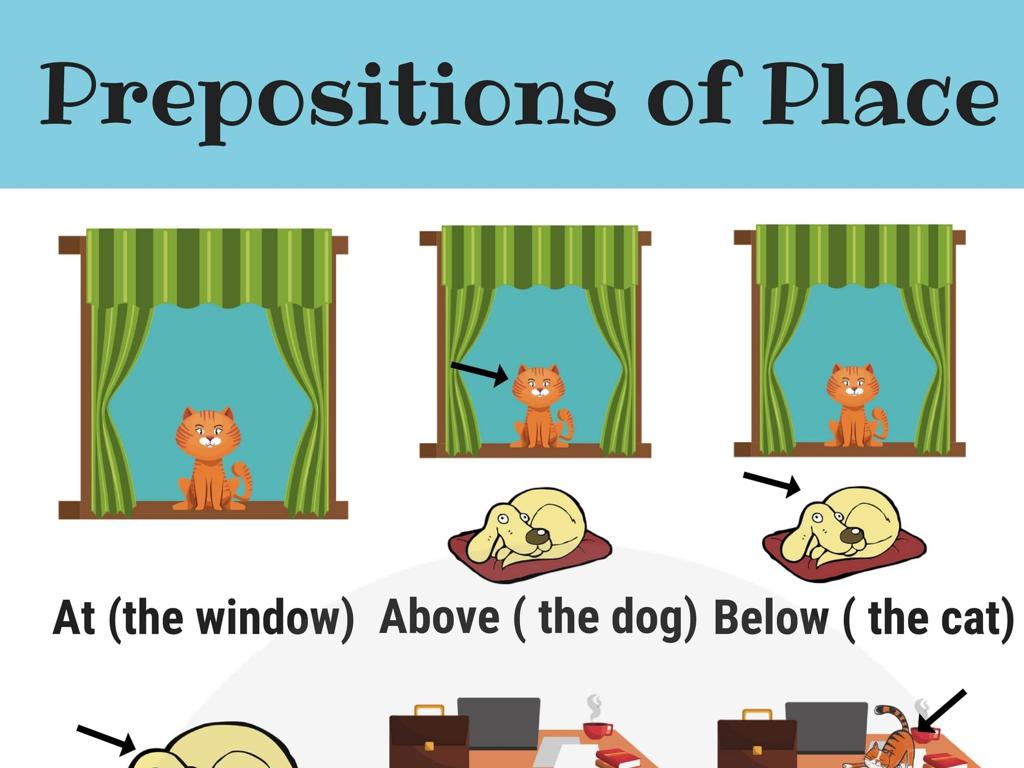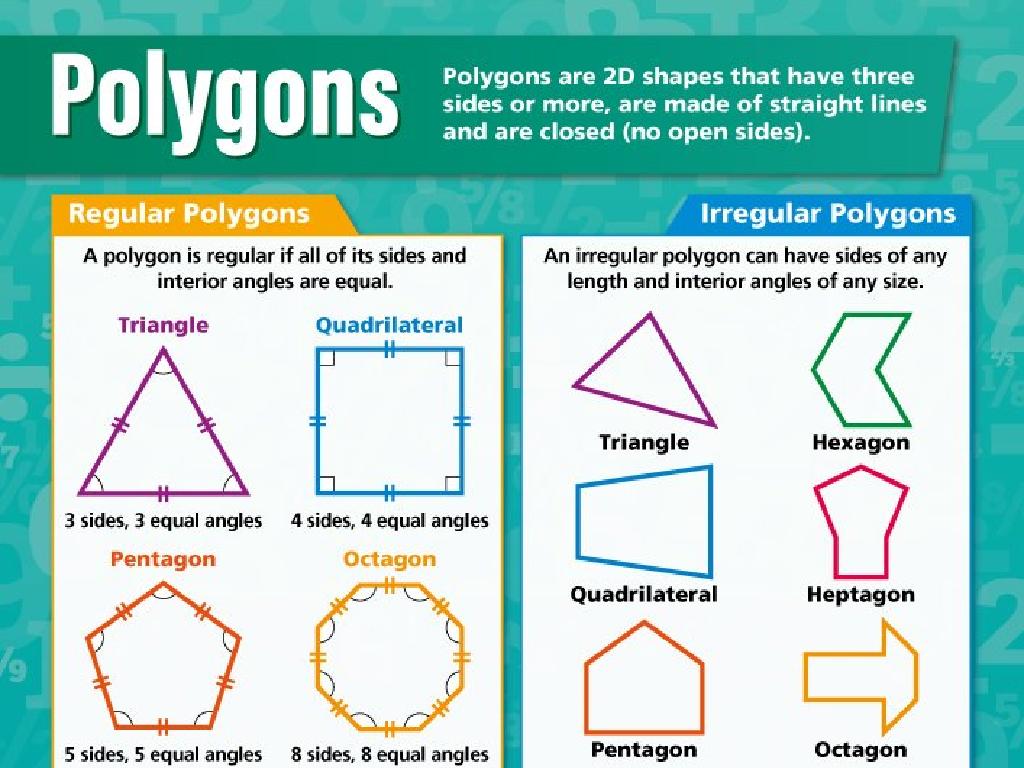Change-Of-State Diagrams: Liquid And Gas
Subject: Science
Grade: Second grade
Topic: Changes Of State
Please LOG IN to download the presentation. Access is available to registered users only.
View More Content
Exploring Liquids and Gases
– States of matter introduction
– Matter can be solid, liquid, or gas
– Liquid to gas transformation
– Heating a liquid can turn it into gas (evaporation)
– Gas to liquid transformation
– Cooling a gas can turn it into liquid (condensation)
– Examples of liquids and gases
– Water as liquid, steam as gas
|
This slide is designed to introduce second graders to the concept of states of matter, focusing on liquids and gases. Begin by explaining that everything around us is made of matter and that matter can exist in different states. Emphasize the transformations between liquid and gas through the processes of evaporation and condensation. Use relatable examples such as water turning into steam when boiled and steam turning back into water when cooled. Encourage students to think of other examples of liquids and gases they encounter in daily life. This will help them relate the scientific concepts to their own experiences.
Exploring Liquids
– Liquids flow and fit containers
– Like water in a cup or a bottle!
– We can pour and drink liquids
– Think about pouring a glass of milk
– Examples: water, milk, juice
– What liquids do you drink at home?
|
This slide introduces the concept of liquids to second-grade students. Begin by explaining that liquids are a state of matter that can flow and change shape to fit inside whatever container they are in. Use relatable examples such as water, milk, and juice to illustrate this point. Demonstrate pouring water from one container to another to show how liquids can be easily transferred and how they take the shape of their new container. Ask the students to share their experiences with liquids they encounter in their daily lives, like drinks they have for breakfast or water they use to wash their hands, to make the concept more relatable and engaging.
Exploring Gases Around Us
– Gases are invisible friends
– Gases expand to fill space
– Like a scent spreading in a room
– Examples of gases we know
– Air we breathe, steam from cooking, helium in balloons
– Gases are part of our daily life
|
This slide introduces the concept of gases to second-grade students. Begin by explaining that gases are substances like the air we cannot always see. Highlight that gases have a special property allowing them to spread out and fill any container or space they are in, much like how a smell can move through a room. Provide familiar examples such as the air around us, steam from hot food, and helium that makes balloons float. These examples will help students relate to the concept of gases in their everyday experiences. Encourage the students to think of and share other examples of gases they might encounter in their daily lives.
Changing States: Liquid to Gas
– Heat causes evaporation
– Evaporation is when liquid turns to gas
– Observing boiling water
– Boiling water turns to steam
– Other examples of evaporation
– Like puddles drying or morning dew
– Understanding gas formation
|
This slide introduces the concept of evaporation, a type of change of state from liquid to gas. Start by explaining that adding heat to a liquid can make it evaporate. Show a simple experiment with boiling water to help students visualize the process. Ask the class to think of other times they ve seen water or other liquids disappear, like when a puddle dries up or how wet clothes dry. This will help them connect the concept of evaporation to everyday observations. Encourage them to share their thoughts and examples. The goal is to help students understand that evaporation is a common process and is one way that a liquid can become a gas.
Changing States: Gas to Liquid
– Gas cools down to become liquid
– Condensation: Gas to liquid
– When gas cools, it changes back to liquid, like steam turning into water droplets.
– Water on a cold drink
– Like droplets forming on a cold soda can.
– Cloud formation in the sky
– Condensation high up forms clouds.
|
This slide explains the process of condensation, a change of state from gas to liquid. It’s important for students to understand that when a gas like water vapor cools down, it turns back into a liquid. An everyday example is the water droplets that form on the outside of a glass containing a cold drink. This same process occurs in nature and is responsible for cloud formation in the sky. When water vapor in the air cools down, it condenses into tiny droplets, which we see as clouds. Encourage students to think of other examples of condensation they may have observed in their daily lives.
Change-of-State: Liquid and Gas
– Diagram: Liquid to Gas
– Shows heating liquid becomes vapor
– Arrows indicate change
– Direction from liquid to gas and back
– Evaporation process
– Water turns to vapor when heated
– Condensation process
– Gas cools down to become liquid again
|
This slide introduces students to the concept of change-of-state with a focus on the transition between liquids and gases. The diagram visually represents how liquids heat up to become gases (evaporation) and how gases cool down to change back into liquids (condensation). Emphasize that these processes are natural and occur in the water cycle, which they may see in everyday life, such as water disappearing from puddles on a hot day or dew forming on grass in the morning. Encourage students to think of examples and ask questions about times they have observed these changes in state.
Let’s Experiment with Evaporation and Condensation!
– Observe evaporation in action
– Gather pot, water, stove, lid
– Make sure to have these items ready for our experiment
– Adult supervision is required
– Watch water turn to gas and back
– See how water changes from liquid to gas and then to liquid on the lid
|
This slide introduces a hands-on experiment to help second-grade students understand the concepts of evaporation and condensation. The experiment will demonstrate how heating water causes it to evaporate and turn into gas, and how cooling the gas above the pot with a lid causes condensation, turning the gas back into liquid. Emphasize the importance of safety and the need for adult supervision when using the stove. Prepare to guide the students through the steps of the experiment, explaining the changes of state as they occur. This visual and practical demonstration will help solidify their understanding of the liquid and gas states of water.
Class Activity: The Water Cycle Bag
– Create a water cycle in a bag
– Observe evaporation and condensation
– Water turns to vapor when heated by the sun
– See water ‘rain’ down in the bag
– Condensed water forms droplets, like rain
– Learn how water changes states
– Understand liquid to gas and back to liquid
|
This activity is designed to help students visualize the water cycle in a simple and engaging way. Each student or group will need a sealable plastic bag, a small amount of water, and access to a sunny window. Fill the bag with water, seal it, and tape it to a window that gets plenty of sunlight. As the sun heats the water, it will evaporate and turn into a gas. When it cools down, it will condense into tiny droplets on the inside of the bag, simulating rain. This experiment demonstrates the change of state from liquid to gas and back to liquid, mirroring the natural water cycle. Possible variations of the activity could include adding food coloring to the water, using different amounts of water to see how it affects the cycle, or recording observations at different times to see how the cycle progresses throughout the day.
Review: Liquids and Gases
– Recap on liquids and gases
– Changing states: liquid to gas
– Heating a liquid turns it into a gas
– The water cycle: evaporation
– Water turns to vapor: evaporation
– The water cycle: condensation
– Gas cools down to become a liquid
|
As we conclude our lesson, let’s revisit the key concepts about liquids and gases. We learned that liquids can change into gases and vice versa. This happens through heating and cooling. For example, when we heat water, it evaporates and turns into water vapor, a gas. This is part of the water cycle, where water evaporates from the Earth’s surface, rises up, cools, and then condenses to form clouds. Later, it falls back to Earth as precipitation. Understanding these processes helps us explain natural phenomena like the water cycle using scientific terms such as evaporation and condensation. Encourage the students to think of examples from daily life where they observe these changes, like steam from a kettle or water droplets on a cold glass.

